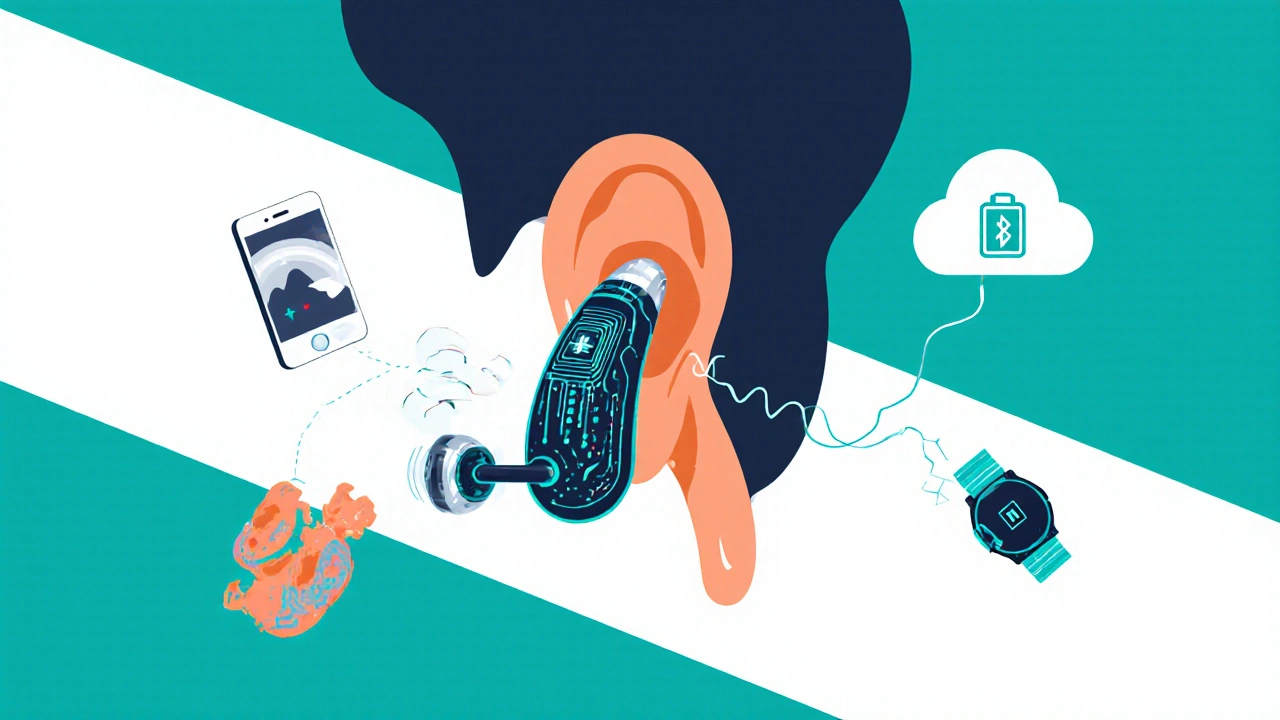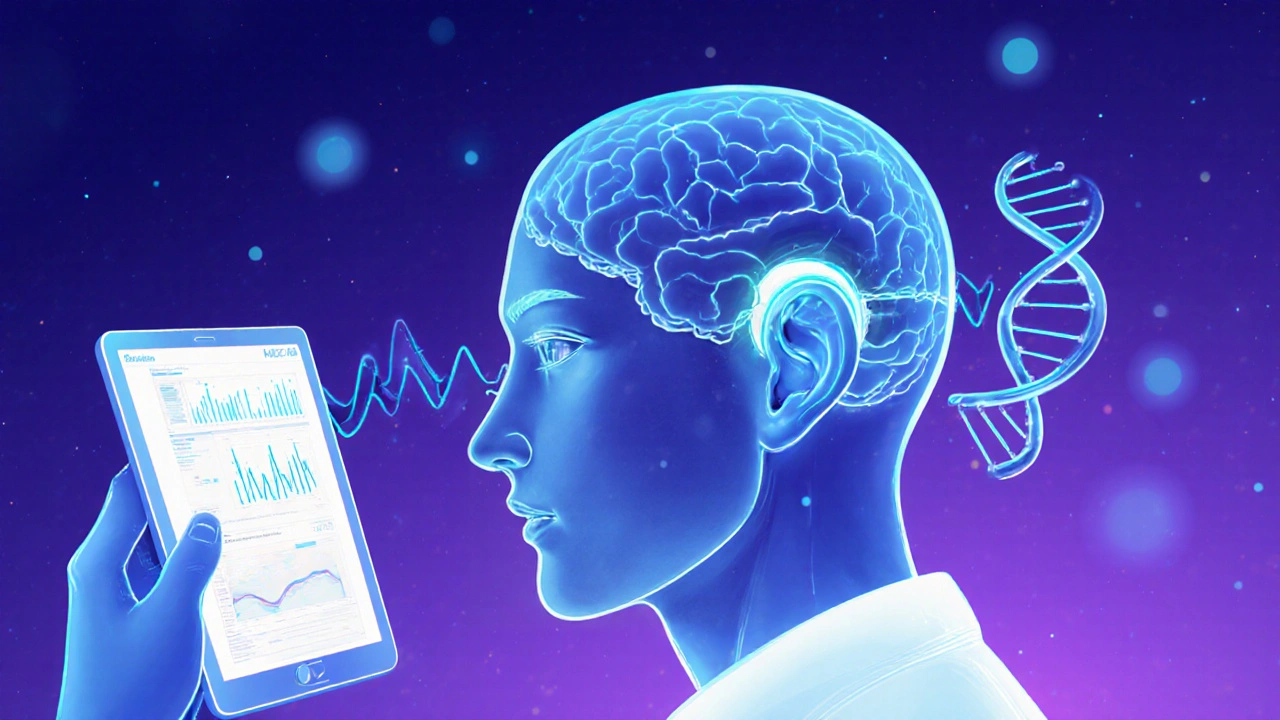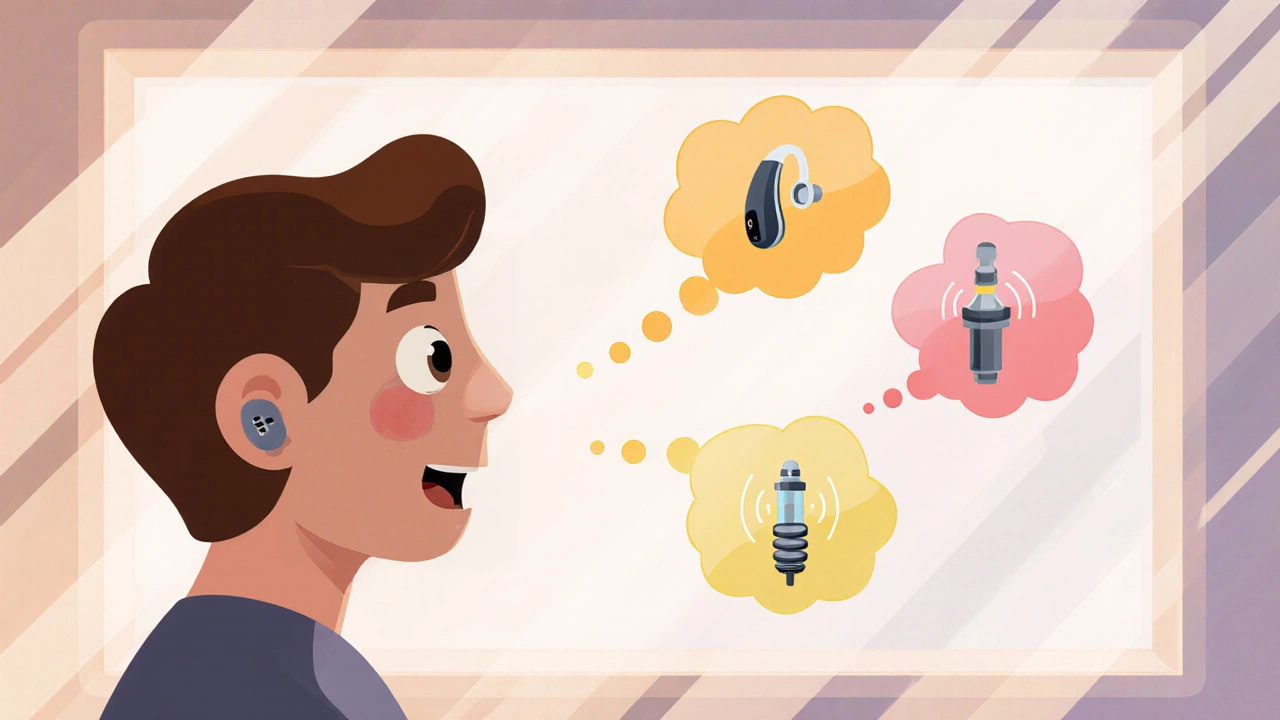Hearing Technology Comparison Tool
Explore how different hearing technologies compare in features, capabilities, and suitability for various hearing loss scenarios.
Select a Technology Type
Key Features Comparison
Best For
Technology Selection Guide
Check your hearing needs:
- Do you need basic amplification or advanced noise reduction?
- How important is wireless connectivity?
- Do you need health data integration?
- What level of hearing loss do you experience?
Recommendation: Select a technology type to see your recommendation.
Living with hearing difficulty can feel like trying to follow a conversation through a fogged window. The good news? The next wave of future hearing technology promises to clear that fog and even give us new ways to experience sound.
What "Hearing Technology" Means Today
Hearing Technology is a collection of devices and software designed to amplify, clarify, or replace sounds for people with hearing impairment. It spans traditional hearing aids, cochlear implants, bone conduction devices, and the newer smart solutions that connect to smartphones.
Modern hearing aids are tiny, digital processors that fit behind the ear or inside the canal. They capture sound, filter out background noise, and deliver a personalized mix straight to the ear canal. While they have become more discreet and powerful, many users still struggle with sudden noises, speech in crowds, or battery life.
Cochlear Implants and Bone Conduction Devices
Cochlear Implant is a surgically implanted electronic system that bypasses damaged hair cells and directly stimulates the auditory nerve. It is typically recommended for severe to profound hearing loss when hearing aids no longer provide benefit. The device consists of an external microphone and processor, and an internal electrode array placed inside the cochlea.
Bone Conduction Device is a hearing solution that vibrates the skull, sending sound directly to the inner ear. It works well for people with outer‑ear problems or single‑sided deafness. Because the transducer rests on the bone, it avoids the ear canal altogether, reducing feedback and irritation.
Smart Hearing Aids: The First Step Toward Intelligent Sound
Smart Hearing Aid combines traditional amplification with wireless connectivity, smartphone apps, and basic AI algorithms that adapt in real time to changing environments. Users can adjust volume, program settings, and even stream phone calls or music directly to the device. The real breakthrough is the ability to learn a user’s preferences over weeks, automatically shifting focus between speech and music.
Still, most smart aids rely on preset modes rather than truly personalized soundscapes. That’s where the next generation of AI and machine learning steps in.
Artificial Intelligence and Machine Learning: The Brain Behind the Ear
Artificial Intelligence in hearing devices refers to algorithms that recognize patterns in audio signals and make rapid decisions about what to amplify or suppress. By training on thousands of real‑world sound environments, AI can differentiate a colleague’s voice from a noisy café, or isolate a baby’s cry in a bustling household.
Machine Learning enables devices to improve over time. Each time a user adjusts a setting, the system updates its model, gradually reducing the need for manual tweaks. The result is a hearing aid that feels like a personal sound assistant rather than a static gadget.

3D‑Printed Custom Ear Molds: Perfect Fit, Better Performance
Traditional ear molds are molded from silicone impressions taken by an audiologist-a process that can be messy and imprecise. 3D Printing offers a digital alternative. High‑resolution scans of the ear canal create a printable model, producing a perfectly snug, breathable shell within hours. A tighter seal improves acoustic performance, reduces feedback, and opens the door for ultra‑small form factors.
Wireless Connectivity and Health Data Integration
Future devices will act as health hubs. Bluetooth Low Energy (BLE) will link hearing aids to smartphones, smart watches, and even electronic health records. Real‑time data-like daily usage, speech comprehension scores, and ambient noise levels-can be sent to clinicians for remote monitoring.
Integration with platforms such as Apple Health or Google Fit means hearing health can be tracked alongside activity, sleep, and heart rate, providing a holistic view of wellbeing.
Beyond the Ear: Neural Interfaces and Gene Therapy
Researchers are exploring ways to bypass the ear entirely. Neural interface implants aim to stimulate the auditory cortex directly, offering potential for people who cannot benefit from cochlear implants. Early animal studies show that precise electrical patterns can evoke recognizable sounds.
Gene therapy is another frontier. By delivering DNA that promotes the growth of healthy hair cells, scientists hope to restore natural hearing without devices. Clinical trials slated for 2026 are the first step toward a world where hearing loss can be cured rather than managed.

How These Innovations Change Everyday Life
- Personalized Soundscapes: AI filters adapt to each user’s preferred listening style, making conversations in restaurants feel natural.
- Seamless Integration: Streaming music, podcasts, or phone calls directly to the ear eliminates the need for extra earbuds.
- Proactive Health Monitoring: Clinicians receive alerts if a user’s device records sudden changes in hearing patterns, allowing early intervention.
- Longer Battery Life: Energy‑efficient chips and wireless charging reduce daily maintenance.
All of these benefits converge on one goal: turning a hearing aid from a medical device into an everyday companion.
What to Look for When Choosing Next‑Gen Devices
- AI‑Driven Noise Reduction: Check if the device learns from your environment.
- Wireless Compatibility: Look for Bluetooth 5.2 or higher and app support for both iOS and Android.
- Battery Options: Rechargeable lithium‑ion cells are becoming standard; verify charging time.
- Fit Customization: 3D‑printed molds or self‑adjusting ear tips improve comfort.
- Health Data Export: Assurance that data can be shared securely with your audiologist.
By evaluating these criteria, you can future‑proof your investment and avoid getting stuck with outdated technology.
Current vs. Emerging Technologies: A Quick Comparison
| Feature | Traditional Hearing Aid (2020‑2024) | Smart Hearing Aid (2025‑2027) | AI‑Powered / Neural Interface (2028+) |
|---|---|---|---|
| Sound Processing | Fixed digital filters | Adaptive noise reduction, speech enhancement | Real‑time AI classification, direct brain stimulation |
| Connectivity | None or basic telecoil | Bluetooth LE, smartphone app | Full IoT integration, health data streaming |
| Fit Customization | Standard silicone molds | 3D‑printed, self‑shaping tips | Implantable or bone‑anchored options |
| Battery | Disposable zinc‑air | Rechargeable lithium‑ion | Wireless inductive charging, energy‑harvesting prototypes |
| Health Monitoring | Manual audiogram checks | App‑based usage stats | Continuous biometric feedback, AI‑driven alerts |
Frequently Asked Questions
Will AI hearing aids replace my current device?
Most AI‑enabled devices are upgrades rather than replacements. They sit on the same hardware platform but add software that learns your listening habits. If your current aid works well, you can often add a firmware update to gain AI features.
Are smart hearing aids safe to use with smartphones?
Yes. manufacturers follow Bluetooth SIG standards and encrypt data transmission. Just keep your phone OS up to date to avoid security gaps.
How long does a rechargeable hearing aid battery last?
Typical usage ranges from 16 to 24 hours on a full charge, depending on processing intensity and volume levels. Overnight charging is now the norm.
Can 3D‑printed ear molds improve comfort?
Absolutely. Because the mold matches the exact geometry of your canal, pressure points are minimized, reducing irritation and improving acoustic seal.
What is a neural interface hearing device?
It’s an implant that bypasses the outer and middle ear, delivering electrical signals straight to the auditory cortex. The technology is still experimental but promises to help people with profound nerve damage.
Will my insurance cover these new technologies?
Coverage varies by country and policy. In Australia, Medicare’s Hearing Services Scheme may subsidize certain advanced devices, but you’ll often need a specialist’s prescription.

